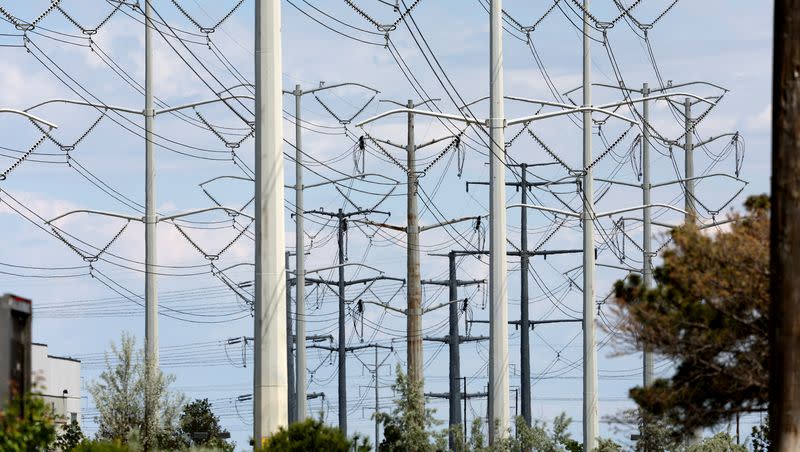Are your lights on and are they on for the military? Why the power grid is at risk

The storm Elliott swept in last Christmas and delivered surprising despair.
More than 55 million people were without power and hundreds died. The storm on the East Coast brought the coldest recorded Christmas in decades to major cities. By Dec. 25, more than 55 million were under wind chill alerts. The storm was responsible for extensive vehicle pileups, and more than 10,000 delayed and canceled flights.
A briefing held Tuesday underscored the importance of a stable U.S. grid and, importantly, how it affects not only civilian lives, but the readiness of our military.
The storms that threaten the grid are called “Black Swans.” But this panel, convened with the National Energy Reliability Corporation, said the swans are turning gray, or even white, when it comes to threatening power supply, meaning they are more frequent. The event was hosted by the American Council on Renewable Energy.
Threat to the military
Jonathon Monken, with Converge Strategies, said the problem is severe when it comes to the military.
“When we talk about batting average in winter storm area ... 12 out of the 15 primary defense installations in Texas lost power for some amount of time. That’s a huge number. So that’s not the batting average DOD wants. That’s not what they’re shooting for. And quite honestly, a lot of the conversations within the national security community and Department of Defense specifically is that at this point, the way they view it is if they want resilient power, if they want energy assurance, then they just have to bring it inside of the fence line because they can’t trust the grid anymore.”
The storm was a wake-up call.
Related
Did renewable energy cause Texas grid failure? Could it happen in Utah?
Rural electric provider in Utah warns of ‘impending U.S. energy crisis’
According to the media webcast, 2021 Texans could have saved nearly $1 billion and kept the power on for 200,000 homes had the isolated grid had an additional gigawatt of inner ties to the southeast. And last Christmas, an additional interregional transmission could have saved southeastern utilities upwards of nearly $100 million for each gigawatt of added capacity.
The problem is compounded beyond keeping your home lights on. Nearly all Department of Defense installations are reliant on the civilian electric grid. And these storms are incredibly costly for the military. In Texas, at Fort Cavazos in February 2021, the electric bill jumped to about $30 million because of winter storm Uri, and that’s roughly the same amount the base paid for all of its energy and fiscal year 2020.
Uri was horrific when it came to lives lost due to grid failure.
A survey conducted by the University of Houston Hobby School of Public Affairs in mid-March found that more than two out of three, or 69%, of Texans lost power at some point during Feb. 14-20, and almost half, or about 49%, had disruptions in water service. The storm contributed to at least 210 deaths, and sources cited by the Federal Reserve Bank of Dallas estimated the state’s storm-related financial losses would range from $80 billion to $130 billion.
Utah is in a better position due to an integrated arrangement via PacifiCorp in which energy is shuffled around in its service area spanning multiple states due to demand, basically in real time.
But it does not mean the risks are not there.
“So 90% of DOD installations depend on private energy in order to function and 98% depend on private communications infrastructure and 86% on private water, wastewater services. These are all outside the fence line assets that are all mission critical, not to mention the fact that 60% of their personnel live off the base in the defense community,” Monken said. “So understanding that even if you turn the DoD installation into an ivory tower, and it’s lit up like a Christmas tree, and then everything else is without power, that doesn’t really solve their mission critical problems.”

